How to make: Shortcrust Pastry by Hand

Making shortcrust pastry by hand is very easy, follow a couple of simple tips I’ve listed below and you’ll see how gratifying it is to make. The joy of making your own pastry is the ability to add flavourings to it.
I have very detailed instructions on how to make shortcrust pastry with the food processor here Why does my pastry shrink? Step-by-step guide to shortcrust pastry. In that post I also have step-by-step instructions on how to roll it, chill it, blind bake, problems with under-baking, shrinkage, the right tins to use and differences in shortcrust pastry recipes, check it out if you haven’t already.
Why make pastry by hand?
The short answer is; because it shrinks less. This is something I noticed when working in a patisserie making both. All pastry will shrink to some extent because it contains liquid and liquid will evaporate as the pastry is baked. How much a pastry shrinks can be manipulated as I have shown in Why does my pastry shrink? Step-by-step guide to shortcrust pastry.
Why handmade pastry shrinks less?
It’s to do with how much the flour is worked. The gluten-forming proteins in flour (glutenin and gliadin) will kick-in as soon as flour comes into contact with liquid. The more the flour is worked the more it is helping the flour’s tiny particles come into contact with liquid. These gluten-forming proteins start to develop, giving their elastic quality to the dough which is not what you want in pastry.
I’ve noticed there is something about the force with which the food processor works that makes the pastry develop further than handmade pastry.
I also wonder if rubbing the fat into the flour by hand is more efficient and therefore more flour particles are covered in fat. Less elasticity in the dough less spring-back when baked as some liquid evaporates.
What’s fat doing in pastry?
Fats can be there for flavour but primarily their job is to make things softer. Butter (roughly 80% fat) coats particles of flour, it will not coat all particles in the flour but enough of them to prevent those particles from coming into contact with liquid. Think of rubbing butter on your skin and then taking a shower, the water would bounce off it, the fat acts as a barrier.
Shortcrust Pastry
This pastry is easy to make because it’s not too delicate, half fat to flour ratio (by weight) easy to remember. Pastries with higher fat or egg yolks are softer and harder to handle.

In a large bowl add the flour, (sugar is using) and butter pieces. If the butter is hard straight from the fridge, cut it, put in the bowl like this and leave it for 10-15 minutes.
Add a flavouring if using. Here I’m adding vanilla paste.
Start rubbing the cubes of butter into the flour mixture. You’re only using your fingertips.
Keep picking up bits of the butter and rubbing well into the flour.
All the time you’re breaking down the butter into smaller pieces and covering it with flour.
And eventually it should look like breadcrumbs, all flour covered.
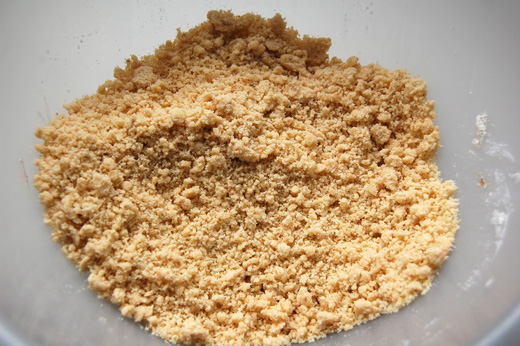
Should feel moist when pressed.

Adding the liquid
This amount of flour will absorb between 3-4 tablespoons of water or milk, it will depend on the flour and a little on how hot the weather is.
The pastry should feel damp but not too sticky.
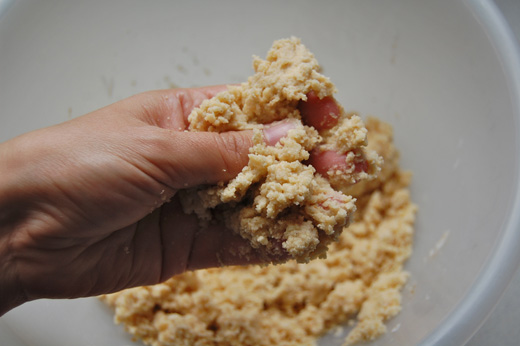
Form into a ball gently, don’t worry about making into a smooth dough, so long as it comes together nicely. Trying to avoid over-handling the dough.
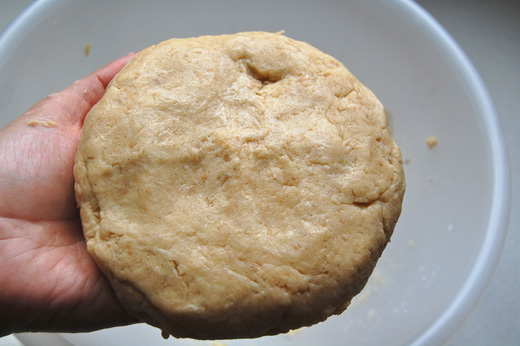
Dough on the left is a wetter dough with 4 tbsp of milk, the drier dough on the right has 3 tbsp of milk. The perfect amount of liquid for this flour is 3 1/2 tbsp.
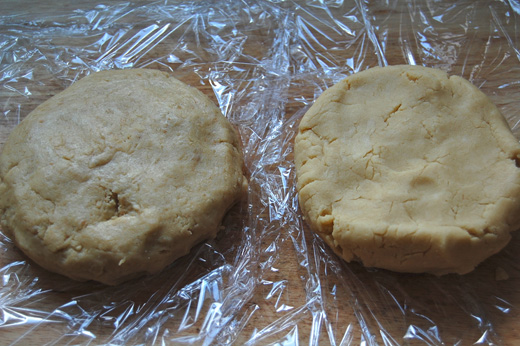
Below, an example of pastry a little too dry, showing too many cracks but it will still perform fine.
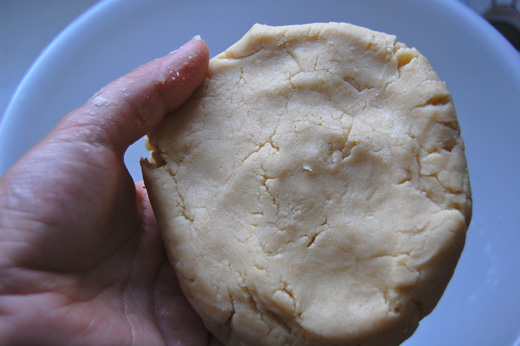
Put the dough in the fridge for 30 minutes. This will make the fat harden a little to enable better rolling. If left in the fridge for a long time it will be very hard because the butter will solidify again. In this case leave the dough out of the fridge for 20-30mins to soften slightly before trying to roll it.
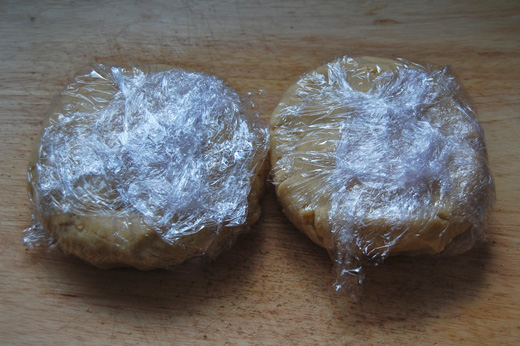
The drier dough has the tendency to crack around the edges.
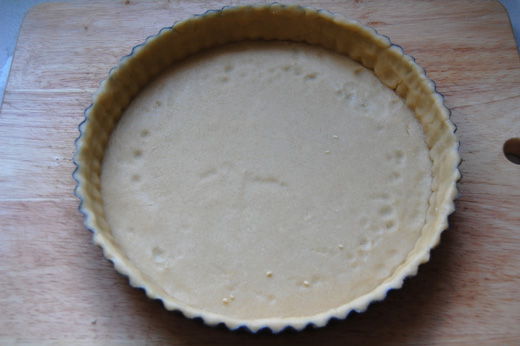
Prick the bottom but not all the way through, to stop the bottom from puffing up. Blind bake with baking beans for 10mins.
Below after blind-baking with the baking beans, not yet baked through properly.
Put it back in the oven for another 5-7mins. Now it’s fully pre-baked ready for the filling. I often brush a whisked egg over the bottom of the pastry, in the last minute in the oven, to give a better seal against the filling.
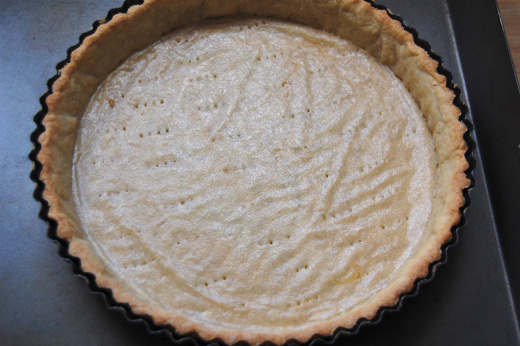
- 250g plain (all purpose) flour
- 125g salted butter, cut into small cubes (if using unsalted add large pinch salt)
- 25g or 2 tablespoons sugar (omit for savoury)
- 1½ teaspoon of vanilla paste or 1 teaspoon of vanilla pure extract (optional for sweet pastries)
- 3 – 4 tablespoons of milk or water
- In a large bowl add the flour, (sugar is using) and butter pieces. Start rubbing the cubes of butter into the flour mixture only using fingertips. Keep rubbing the butter into the flour until all the flour resembles breadcrumbs.
- Add 3 tablespoons of the liquid and start bringing the dough into a ball, if there’s dry bits of dough not coming together add another ½ tablespoon.
- Gently form into a disc, cover with clingfilm and rest in the fridge for 30mins before rolling out.
